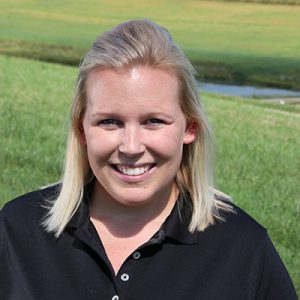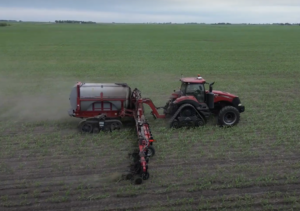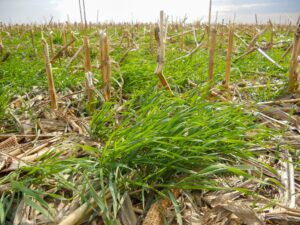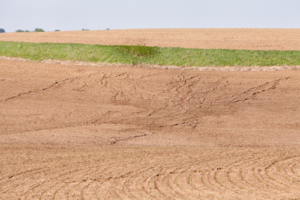By: 4R Plus
October 2019

Comprehensive soil fertility testing is the foundation of a farm’s prescribed 4R nutrient stewardship program, says Emily Doyle, precision ag specialist at New Century FS. She works with farmers across central and east-central Iowa, arming them with information to make decisions that protect yield potential and the environment.
She said soil testing makes economic sense. “The cost of soil sampling easily pays for the savings in fertilizer and nutrients.”
Doyle uses the example of testing the soil’s pH to illustrate cost savings. “Instead of regularly applying lime across whole fields, testing and learning that you only need to apply it on certain areas of the field, and more in some areas and less in others, saves money,” she said. “That’s just one example of why it’s important to have a soil testing plan in place.”
A lot of farmers capture soil data in the fall after harvest, but Doyle is seeing an increase in spring soil testing as farmers look to save time at harvest. “Whether or not you’re testing your soils in the spring or fall, it’s very important to stay consistent in the time frame you’re testing,” she said. “So if you’re testing in the fall this year, in three or four years sample again in the fall.”

It’s important to determine the size of a testing plot. “The smaller the better when grid soil sampling, but regardless of grid size, you are gathering valuable information about what the field needs to be productive,” she added. “We know every field is not the same.”
Farmers are often surprised by soil test results. She said if the soil test includes a cation-exchange capacity, farmers are curious to learn why it’s important. “This is a measure of the soil’s holding capacity and is especially important when determining how much nitrogen the soil can utilize,” she said.
Doyle uses the information from soil testing to start a conversation about the importance of following the 4Rs of nutrient stewardship. “By applying the right nutrient at the right rate, at the right time and at the right place, farmers are spoon-feeding crops exactly what’s needed during the growing season. It’s like pinpointing on a map,” she said. “Precisely placing nutrients assures they will be utilized by the crop.”
This education has led to an increase in the demand for stabilizer products and encapsulated urea, Doyle said. “Farmers are interested in doing the right thing,” she added. “And in return they are getting even higher yields by being more precise in applying their fertilizer. This is a great thing to see.”
Doyle is also encouraged that more farmers in the area she serves are planting cover crops. “Cover crops are definitely part of a nutrient plan,” she said. “They help keep the soil in place and trap the nutrients in the soil.”
She practices what she preaches. Along with her husband, Brandon, the Doyles use an integrated 4R Plus approach on their Tama County farm. “We have a grid soil sampling program we follow and variable-rate apply the fertilizer where it’s needed,” she said. “In the past 10 years we’ve added waterways and buffer strips. Even though we have flat ground, we saw the need to limit soil and sediment loss.”
They view soil as a valuable investment. “It’s important to use 4R Plus practices to maintain the legacy of passing the land to the next generation. We want to improve the soil and make sure the soil remains healthy and profitable for our operation,” she said.
Doyle encourages farmers to work with their local agronomic provider to learn how they can implement the 4Rs of nutrient stewardship on their farms.



